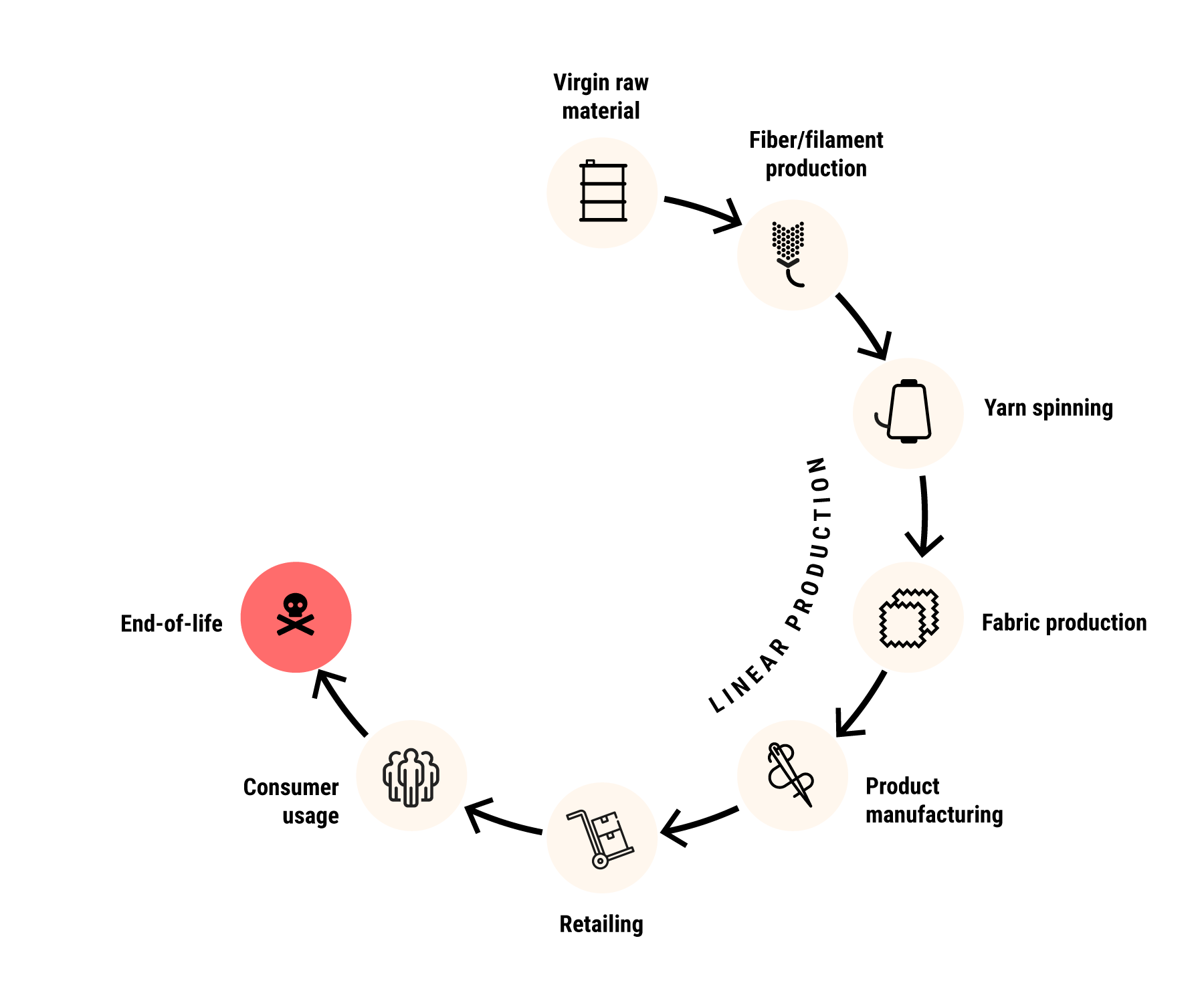Was ist ein kreislauffähiges Produkt?
Currently, there is no industry standard for recyclable products. We can use no agreed definition or
criteria as a basis. What is clear, however, is that we need to manufacture products that
• länger verwendet werden können
• erschaffen werden, um von neuem erschaffen zu werden
• aus sicheren und recycelten Rohstoffen
Im Kreislauf denken,
Verantwortung tragen
Designkriterien für Kreislaufwirtschaft
We consider the impact of production with every new product and the entire life cycle. We thoroughly
research materials, processes and emerging technologies to understand and reduce the environmental footprint
of each product.
However, designing circular products requires not just an extra step in the process, but an entirely new
approach. Every design decision affects the circularity of a product. In the shift from a linear to a
circular economy, all components - from materials to fabric treatment - must undergo a review based on the
following criteria:
1
Veringerte Umweltauswirkungen
Herausforderungen beim zirkulären Design
Durability and recyclability are not always compatible, which often leads to trade-offs between making
products that last and those that are easy to recycle at the end of their life. Durable products often
require additional reinforcements that are more complicated to disassemble and recycle later. Recyclable
products require mono-fibers that do not always offer the same performance, functionality or durability.
Für unsere Designentwicklungen legen wir unseren Fokus auf Langlebigkeit, da Taschen und Rucksäcke täglich und über Jahre intensiv genutzt werden sollen. Minimalistisches Design ist auch zeitloses Design und verlängert im besten Fall auch die Nutzungsdauer. Danach kommen die Aspekte der Umweltverträglichkeit, also um die grössten Emissionen in der Materialproduktion zu minimieren.
We live in times that require new approaches. Times in which we have to free ourselves from outdated views.
As a value-driven company, we share common beliefs and want to lead the circular economy in our field.












